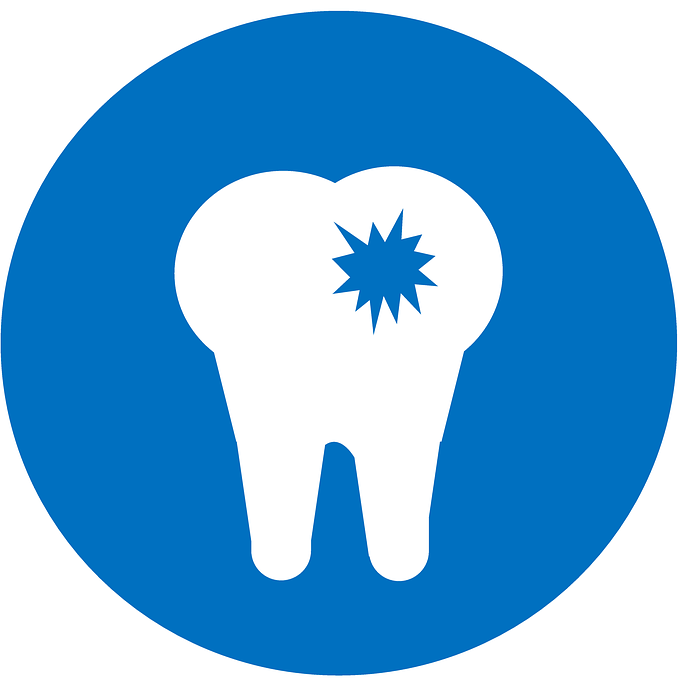A good oral hygiene regimen is the best way to prevent tooth decay. Brushing your teeth with fluoride toothpaste following meals and snacks, flossing between the teeth and eating tooth-healthy foods all help in preserving protective tooth enamel. However, your own saliva is a plaque-fighting agent. Rinsing your mouth and drinking fluoridated tap water help reduce plaque from building up on the teeth. As mouth bacteria feed on plaque, they produce acid that attacks the protective tooth enamel. Cavities naturally occur wherever teeth are vulnerable to these attacks, but you may not even be aware this is happening. Here are five basic warning signs of the presence of a cavity:

A Change In The Color Or Appearance Of Teeth
The outer enamel layer of healthy teeth is shiny and translucent emitting a healthy color of the dentin just below this surface. As acid wears down minerals in the teeth, especially calcium, the result is a dull, chalky appearance in spots. This is a primary indication of decay and is often overlooked. Sometimes, when going in for whitening treatments, patients learn the darkening of the teeth is the first sign of dental decay. Teeth begin to look dark when decay has progressed to the pulp.
Bad Breath
Good oral hygiene helps keep food from remaining stuck between teeth. Food matter in the teeth provides a feast for mouth bacteria, but it also may produce the smell associated with the decomposition of those particles. As teeth change from tooth decay, they can shift and move; as where there is a space, the teeth will naturally move to fill in that space. If gaps occur in the teeth, more food may get stuck between them. When this occurs, it takes more effort to perform good oral hygiene habits such as frequent brushing and flossing.
Toothache
Pain is not always associated with tooth decay as the process occurs slowly over time. However, pain resulting from dental caries may range from mild to severe based upon the extent of decay. This pain may be oblique seeming to emanate from the sinuses or as an earache. There may be mild to sharp pain when biting down or when eating or drinking hot or cold items. Sometimes, instead of seeing the dentist to investigate these issues, patients turn to toothpaste for sensitive teeth. As a solution, this may solve the annoyance of pain while prolonging the damage done from decay. This can make worse the degree of tooth destruction.
Visible Holes In Teeth Or Pitted Teeth
As tooth decay progresses, especially in the back teeth, you may become aware of visible holes as you find food getting stuck in them. As decay undermines the outer enamel layer of teeth, the destruction from the acids produced by bacteria proceed to the underlying dentin. Teeth may appear pitted as the tooth structure is failing. As tooth decay is allowed to continue, it could leave teeth vulnerable to fractures or chipping.
Swollen Gums
Decay can continue to the point of reaching the pulp layer in the teeth. At this stage, the surrounding tissue and bone are subject to further decay resulting in an infection. The pus generated from an infection can cause swelling in the gums. This is a situation that calls for immediate attention. The dentists rely on the latest in a modern state-of-the-art dental facilities and equipment so that you can feel as safe as possible. The sooner a Prevention dentist, such as a boise id dentist, can see a patient with swollen gums, the better they can help fight the infection and help reduce the risk for other more serious conditions in the body that start by infections in the mouth.
Overall, cavities are not any fun, but there are tons of ways you can help prevent them. All you have to do is regularly take good care of your teeth and build up your dental hygiene routine. You definitely won’t regret it!

